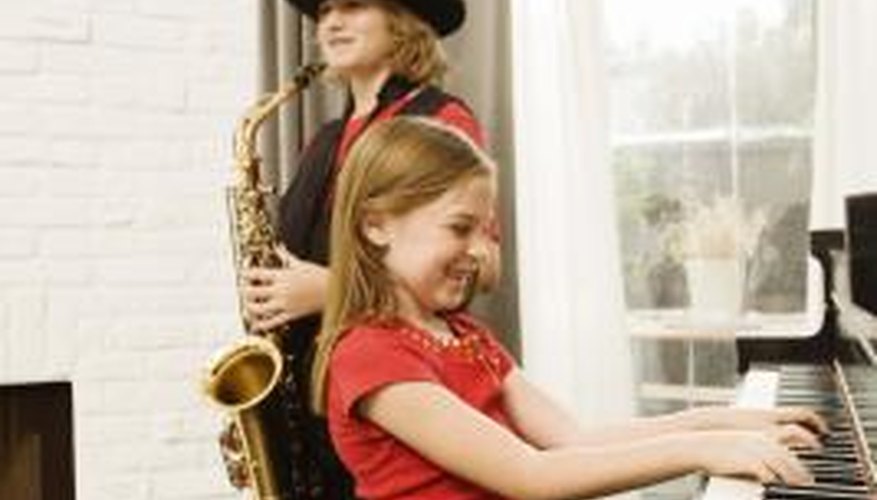Looking at the expanse of 88 keys stretched out before you can be confusing and overwhelming if you're a beginning student of the piano. Each note on the piano has a corresponding letter name. It may be helpful to label the notes using small stickers to help you identify them as you learn to play.
Locate the note "C" on the piano keyboard. All the "Cs" on the piano except for the highest note on the keyboard have one black note to the top right and a single white note to the left. Label the "C."
- Looking at the expanse of 88 keys stretched out before you can be confusing and overwhelming if you're a beginning student of the piano.
- All the "Cs" on the piano except for the highest note on the keyboard have one black note to the top right and a single white note to the left.
Count one white note to the left of the "C." This note is "B."
Count down two white notes to the left of "C." This is "A."
Proceed up the keyboard from "C." One note up from "C" is "D" followed by "E," "F" and "G." After "G," the musical alphabet starts over again with "A." Continue to label as much of the piano keyboard as you feel is necessary.
Translate the black keys to letter names after you complete the white keys. Pick a black key and look at the white note to the bottom left. The letter name for the black key is the name of that note with the addition of the sharp symbol. For example, the black note with a "G" at the bottom left is a "G sharp." Black notes have two names. One "flat" name and one "sharp" name. Figure out the "flat" name by looking at the white note to the bottom right. Continuing with the previous example, the black note "G sharp" is also known as "A flat" because the white note to the bottom right is "A." Continue this pattern for the rest of the black notes, dually labelling each one.
- Count down two white notes to the left of "C." This is "A."
- Proceed up the keyboard from "C." One note up from "C" is "D" followed by "E," "F" and "G." After "G," the musical alphabet starts over again with "A."
- Continue to label as much of the piano keyboard as you feel is necessary.
- Continuing with the previous example, the black note "G sharp" is also known as "A flat" because the white note to the bottom right is "A."
- Continue this pattern for the rest of the black notes, dually labelling each one.
TIP
If possible, locate a labelled diagram of a piano keyboard to use as a model during the translation process.
